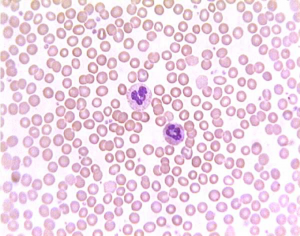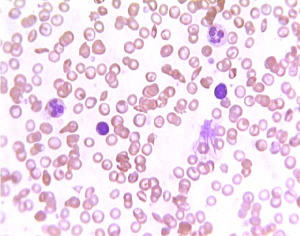
Last Updated Dec 1, 2020
This unit will introduce students to the genetic disease, sickle cell anemia. Students will analyze and develop questions about the disease while looking at blood smear for healthy and sickle patients. Throughout the unit, students will analyze pieces of evidence (collected and provided data sets) to answer their questions and eventually come to understand the mechanism of sickle cell anemia.
Looking for the mobile laboratory version of The Mystery of Crooked Cell?
Looking for the answer keys for this activity bundle? Complete this form to gain the password to our Activity Keys webpage.
Students will know
- Amino acids and protein structures
- Transcription and translation
- Function of red blood cells
Students will understand
- How changes in DNA lead to phenotypic outcomes and diseases
- The symptoms and mechanism of sickle cell anemia
Students will be able to
- Ask scientific questions about images of two provided blood smears
- Interpret data about the blood cell counts for both of the provided samples
- Demonstrate how a change in DNA causes a change to the protein it codes for
- Use a model of hemoglobin to assess how a change to an amino acid affects protein function
- Conduct an investigation to determine how blood cell shape can affect blood flow
- Construct an explanation based on evidence for why sickled red blood cells differ from normal red blood cells
Next Generation Science Standards Connections
HS-LS1-1: Construct an explanation based on evidence for how the structure of DNA determines the structure of proteins, which carry out the essential functions of life through systems of specialized cells.
Texas Essential Knowledge and Skills Connections
B.6A: identify components of DNA, identify how information for specifying the traits of an organism is carried in the DNA, and examine scientific explanations for the origin of DNA
B.6E: identify and illustrate changes in DNA and evaluate the significance of these changes
Italics denote aspects of the standard not covered in the activity bundle.
UNIT PLAN
Activities to Gather Evidence
The Mystery of the Crooked Cell was written by Donald A. DeRosa and B. Leslie Wolfe and adapted by Learning Undefeated


